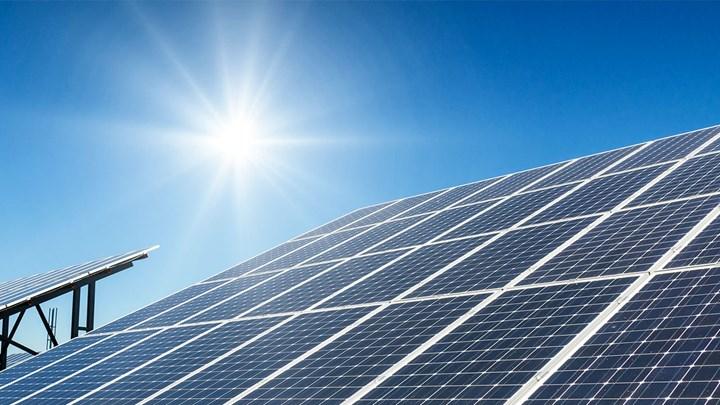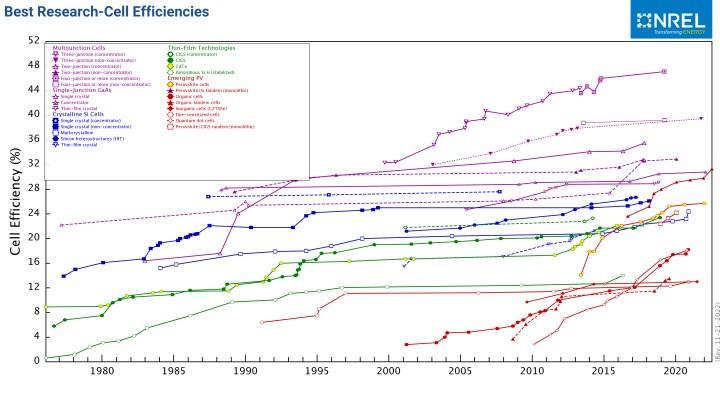 The National Renewable Energy Laboratory (NREL) has presented an interactive chart of the highest certified conversion rates of cells used in solar panels. NREL said in a statement that with the new interactive chart, users can collect and compare decades of research data.
The National Renewable Energy Laboratory (NREL) has presented an interactive chart of the highest certified conversion rates of cells used in solar panels. NREL said in a statement that with the new interactive chart, users can collect and compare decades of research data.Efficiency rates of solar cells
 According to the shared table data, the most efficient solar panel cell type shown in purple is the four-layer multi-junction with a conversion rate of 47.1 percent. Multi-junction cells attract attention with their multi-pn junctions made of different semiconductor materials, and thus can capture different wavelengths of light. The biggest contribution of the higher wavelength range is the increased efficiency of the cell in converting sunlight into electrical energy.
According to the shared table data, the most efficient solar panel cell type shown in purple is the four-layer multi-junction with a conversion rate of 47.1 percent. Multi-junction cells attract attention with their multi-pn junctions made of different semiconductor materials, and thus can capture different wavelengths of light. The biggest contribution of the higher wavelength range is the increased efficiency of the cell in converting sunlight into electrical energy.After the multilayer cells are the traditional crystalline silicon-based solar cells, shown in blue. It can reach 27.6 percent of these cells. However, the rapid rise of a type of solar cell that I would like to draw your attention to is also visible. A relatively new type of solar cell known as perovskite stands out for its cheap and efficient nature. On the other hand, it should be noted that perovskite is also used in the batteries of today’s electric vehicles. The efficiency of the perovskite and silicon-based monolithic cell has increased to 31.3 percent.
At the bottom of the chart are organic solar cells that have been developed since the early 2000s. Thanks to the techniques developed in this field, efficiency above 17 percent can be achieved. The point reached in organic solar cells, which is flexible, low-cost and where potential efficiency increases can be experienced in parallel with the developments in organic chemistry, has almost caught up with conventional solar panels.